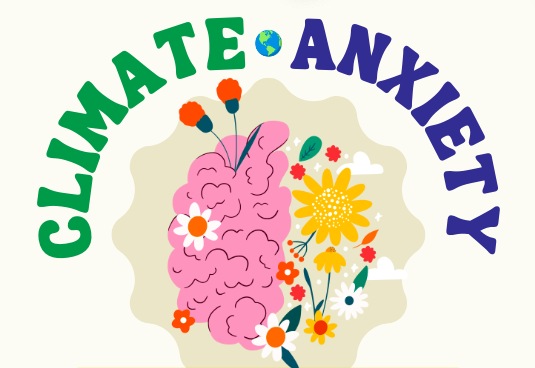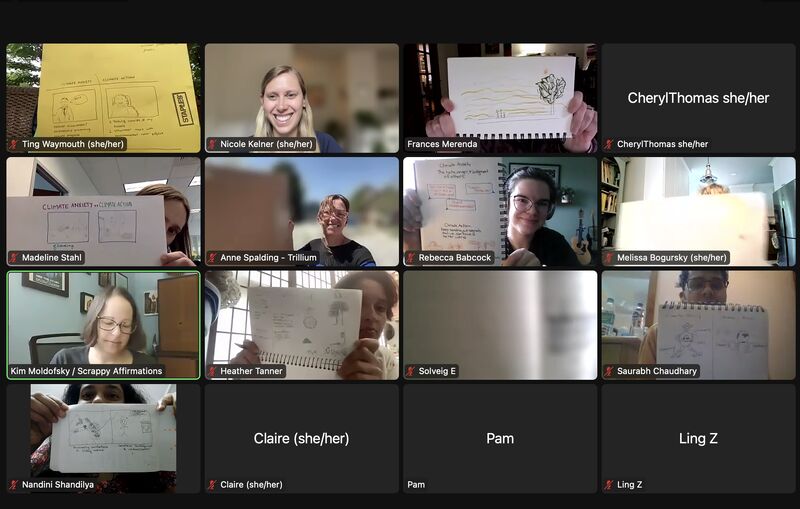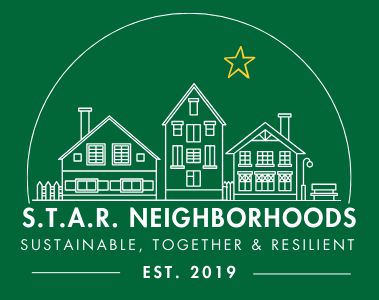Mental Health Awareness Month

While May is National Mental Health Awareness Month, these resources can help deal with the climate-change-induced anxiety that many of us feel year-round.
Although we are increasingly aware of the physical health implications of climate change, like increased rates of asthma, heat-related illnesses, and direct injuries from stronger and more frequent weather events, the emotional toll of climate change on mental health is not often discussed. However, many of us feel anxious and even hopeless when faced with climate change and its devastating effects on our own lives and around the world. It is important to recognize that no one is alone in feeling this way. One of Sustainable Princeton’s three action pillars is to foster community relationships to increase our resiliency to climate change—which includes emotional resiliency too.
While our community must make swift climate action, it’s equally important to take care of ourselves to avoid falling into a doom spiral and becoming paralyzed.
How Climate Change Relates to Mental Health

Climate change has environmental, political, health, economic, and numerous other implications that affect mental health, causing stress, anxiety, and depression, and can even increase aggression and violence. Mental health professionals are catching on. The American Psychological Association (APA) defines ‘eco-anxiety’ as, “the chronic fear of environmental doom” [1]. Eco-anxiety comes from observing the impacts of climate change and the concern for the future of themselves, others, and future generations. And of course, those who have experienced trauma by living through natural disasters, losing homes, jobs, pets, or loved ones.
Climate Anxiety in Vulnerable Groups
Climate change affects everyone, however, we would be remiss if we didn’t recognize that certain populations within our community are disproportionately impacted. Factors such as certain geographic locations, pre-existing disabilities or chronic illnesses, and socioeconomic and demographic inequalities, such as education level, income, and age [1]. These more vulnerable groups may also have less power to affect political solutions to climate change.

For example, in Princeton, some of our lower-income neighbors live in one of the most flood-prone parts of town. While everyone who lives in Princeton likely worries about flooding, for a person who may not have the means to bounce back from a flooded home, that worry can feel exponentially more stifling.
What You Can Do
Building a climate-resilient Princeton takes more than just infrastructure and policy changes. Our sense of community is an essential piece of a resiliency plan because we’re in this together and whether we like it or not, depend on each other for our mutual survival in this climate crisis.
When anxiety about the future begins to spiral, it’s important to combat climate anxieties by coming back to the present moment. Recognize that all is not yet lost, and practice gratitude for what we still have—especially here in Princeton. We are so fortunate to have such a beautiful place to live, work and study.
And what better way to practice our gratitude than by living in a way that preserves our community’s future? We can still make a difference and avoid the most drastic effects of climate change. Participating in climate action is good for mental health, as well!
- Take collective action with like-minded neighbors who want to work towards a common goal.
- Volunteer with local sustainability nonprofits such as Sustainable Princeton (us!), Herrontown Woods, FOPOS, The Watershed Institute, and more.
- Join your local S.T.A.R. Neighborhood or start one! The S.T.A.R. Neighborhoods Program is free for Princeton residents who want to build a more sustainable, together and resilient neighborhood. S.T.A.R Neighborhoods are part of a community-wide network of sustainably minded and engaged neighbors, who get access to mini-grants, special resources, and educational opportunities through Sustainable Princeton.
- Connect with nature. Enjoy local parks, Greenways, and Gardens
- An ongoing study being conducted out of King’s College in London found that “people who live near green spaces are less likely to struggle with mental health issues” [2].
- Talk about it. Don’t be afraid to share your feelings. Talk with a friend, family or therapist.
- You may want to explore ways to get involved with solutions together.
- If you are a parent, here is a helpful video about how to talk to your kids about climate change
- Remember to take care of yourself, even when others depend on you.
- Know when you need to disconnect from your devices and your projects- it can be a difficult boundary to define at first but it can sincerely help to reduce stress and anxiety.
- Try creative art therapy
- We recommend Nicole Kelner’s monthly free virtual Climate Art Workshops, learn more on her website.
- Follow these pages to learn more:
- Connect with local mental health professionals at Princeton Integrated Behavioral Health
If you or someone you know is in danger of hurting themselves or others, please call 988.
Sources:
[1] Mental Health and Our Changing Climate: Impacts, Implications, and Guidance. American Psychological Association (APA). March 2017. https://www.apa.org/news/press/releases/2017/03/mental-health-climate.pdf
[2] Prof Andrea Mechelli: ‘People who live near green space are less likely to struggle with mental health issues’. The Guardian. Shaoni Bhattacharya. May 2024. https://www.theguardian.com/science/article/2024/may/19/andrea-mechelli-urban-mind-green-space-mental-health
Thanks to Marissa Mejia from Princeton University Class of 2023 for inspiration.


